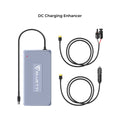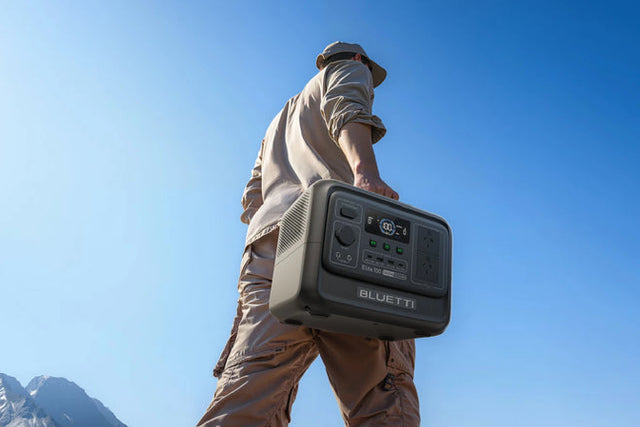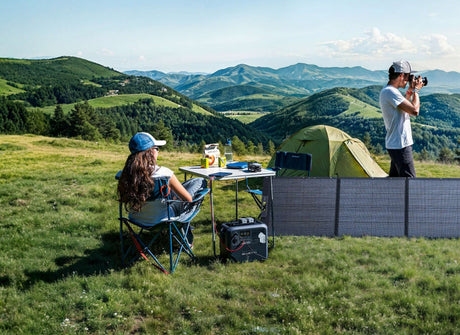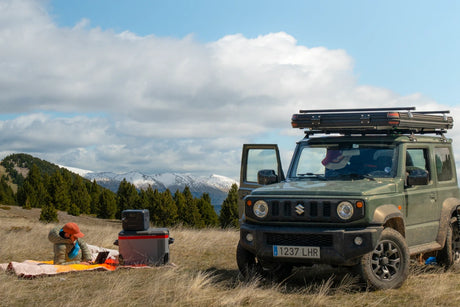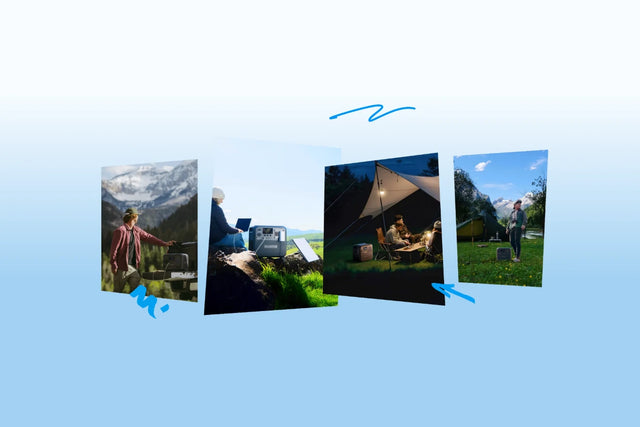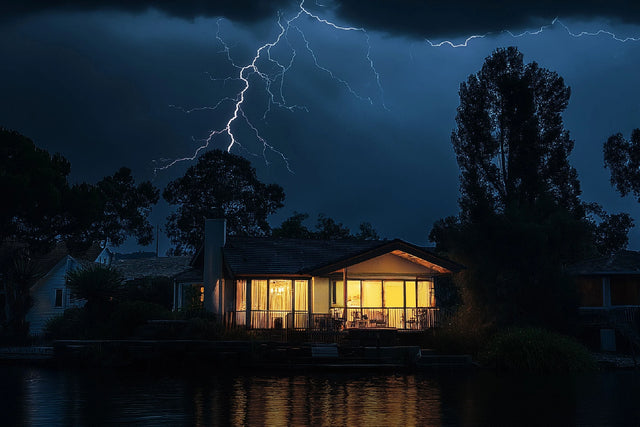Living Off The Grid: Tiny Homes In Australia
In today's fast-paced world where consumerism and materialism reign supreme, there is a growing movement towards living a simpler and more sustainable lifestyle. This has led many individuals and families to embrace the idea of living off the grid, disconnecting from traditional forms of energy and living in smaller, more environmentally friendly homes. In Australia, this trend has gained significant momentum, with more and more people choosing to downsize and reduce their carbon footprint by residing in tiny homes. In this article, we will explore the concept of living off the grid and its popularity in Australia, as well as the benefits and challenges of this lifestyle. Join us as we delve into the world of tiny homes and discover how they are shaping the way we live and think about our impact on the planet.
I. Benefits of Living Off the Grid
Living off the grid in tiny homes has gained popularity in Australia as people are becoming more conscious of their impact on the environment and seeking simpler, more sustainable lifestyles. In this section, we will discuss the various benefits of living off the grid in tiny homes.
A. Environmental Benefits
One of the main benefits of living off the grid is the positive impact it has on the environment. By choosing to live in a tiny home, individuals are reducing their carbon footprint. These homes are often built using environmentally friendly materials and have a smaller energy and water consumption compared to traditional homes. This means that living off the grid in a tiny home is a more sustainable and eco-friendly option.
Moreover, living in a tiny home also promotes the preservation of natural resources. Tiny homes require less land for construction and therefore, leave a smaller footprint on the earth. This allows for more green spaces and less destruction of natural habitats. Additionally, off the grid living promotes the use of renewable energy sources like solar or wind power, further reducing the reliance on non-renewable resources.
B. Self-Sufficiency
Another advantage of living off the grid in tiny homes is the ability to become more self-sufficient. Tiny homes are designed to be self-sufficient and operate independently from traditional utilities. With the use of solar panels, rainwater harvesting systems, and composting toilets, individuals can reduce their dependence on the grid and municipal services.
Living off the grid can also lead to lower costs of living. Tiny homes have a smaller living space, which means lower energy and water consumption. In addition, the use of renewable energy sources can significantly reduce utility bills. This allows individuals to save money and invest in their future instead of spending on high living expenses.
C. Minimalism and Simplicity
Living off the grid in tiny homes also promotes a minimalist and simpler lifestyle. The small living space encourages individuals to declutter and live with only the essentials. This can lead to a more organized and stress-free living environment. Moreover, living in a tiny home allows for more time and resources to be spent on experiences, rather than material possessions.
living off the grid in tiny homes has numerous benefits, both for the individual and the environment. It promotes sustainability, self-sufficiency, and a simpler way of life. With the increasing concern for the environment and rising living expenses, living off the grid in tiny homes offers a viable solution for a more sustainable and fulfilling lifestyle.

II. Challenges of Living Off the Grid
Living off the grid in tiny homes in Australia may seem like the ultimate dream for many individuals seeking a simpler and more sustainable lifestyle. However, this way of living is not without its challenges. In this section, we will discuss some of the common challenges faced by those living off the grid in Australia.
A. Obtaining land and permitsThe first and most significant challenge when it comes to living off the grid in Australia is obtaining suitable land to build a tiny home. In a country with a high population density, finding a suitable and affordable piece of land can be a daunting task. Additionally, many local councils have strict regulations and permitting processes in place for building and living in tiny homes. This can make it challenging to find a suitable location and obtain the necessary permits for off-grid living.
B. Building and maintenance costsBuilding a tiny home can be a cost-effective option for those looking to go off the grid. However, the initial investment may still be a significant barrier for some individuals. The cost of purchasing and installing off-grid systems such as solar panels, rainwater tanks, and composting toilets can add up quickly. Additionally, maintenance and repair costs for these systems can also be quite steep. This can make it challenging for some people to afford off-grid living in the long run.
C. Adjusting to a new lifestyleLiving off the grid means adjusting to a completely different lifestyle, which can be a significant challenge for many individuals. It requires a significant change in mindset and daily habits, such as conserving energy and water, growing your food, and managing waste. This lifestyle can also be isolating and may require individuals to give up certain conveniences and luxuries that they were accustomed to. It takes time and effort to adapt to this new way of living.
D. Legal considerations/b>While living off the grid may seem like a free and independent way of life, it is essential to consider the legal implications of doing so. In some parts of Australia, living off the grid may not be allowed or may be subject to certain restrictions and regulations. For instance, some states have regulations in place for the size and location of tiny homes, while others may require individuals to have a building permit for their tiny home. It is crucial to research and understand the legal implications of living off the grid in your specific location.
living off the grid in tiny homes in Australia may seem like a perfect solution for those seeking a simpler and more sustainable lifestyle. However, it is essential to consider and prepare for the challenges that come with this way of living. From obtaining land and permits to adjusting to a new way of life, and legal considerations, living off the grid is not without its challenges. But for those who are determined and willing to make the necessary adjustments, the rewards of off-grid living can be immeasurable.

III. Designing an Off-Grid Tiny Home
Living off the grid in a tiny home requires careful consideration and planning when it comes to designing the space. Every aspect of the home must be optimized for sustainability, functionality, and self-sufficiency. Here are some key elements to keep in mind when designing an off-grid tiny home in Australia.
A. Sustainable and energy-efficient materialsOne of the main goals of living off the grid is reducing your environmental impact. Therefore, it is crucial to use sustainable and energy-efficient materials in the construction of your tiny home. This can include recycled or repurposed materials, as well as eco-friendly options such as bamboo, cork, and reclaimed wood. These materials not only have a lower impact on the environment, but they also help to regulate the temperature inside the home, reducing the need for heating and cooling.
B. Utilizing renewable energy sourcesTo truly live off the grid, it is important to reduce your reliance on traditional forms of energy. Instead, opt for renewable energy sources such as solar, wind, or hydro power. Australia is known for its abundant sunshine, making solar panels an ideal option for powering your tiny home. You can also consider installing a wind turbine or a hydroelectric system if your location allows for it. By harnessing renewable energy, you can significantly reduce your carbon footprint and live a more sustainable lifestyle.
C. Water collection and filtration systemsIn a tiny home, every drop of water counts. This is why it is essential to have a water collection and filtration system in place. Depending on your location and climate, you can use rainwater harvesting systems or collect water from a nearby natural source. It is also important to have a filtration system in place to ensure that the water is safe for consumption. This way, you can have a self-sufficient and sustainable water supply for all your daily needs.
D. Waste management solutionsIn a tiny home, space is limited, and waste management can become a challenge if not properly addressed. To reduce your environmental impact, it is important to have effective waste management solutions in place. This can include composting toilets, which use little to no water and turn waste into nutrient-rich compost. You can also implement a recycling system to reduce the amount of waste that goes to landfills. By managing your waste effectively, you can live more sustainably and minimize your ecological footprint.
E. Maximizing space and functionalityIn a tiny home, every square inch counts. Therefore, it is important to design your space in the most efficient and functional way possible. Consider utilizing multi-purpose furniture, such as beds with built-in storage or foldable tables, to save space. Additionally, try to incorporate natural light and ventilation into the design to reduce the need for artificial lighting and air conditioning. By maximizing space and functionality, you can make your tiny home feel more spacious and comfortable.
designing an off-grid tiny home in Australia requires thoughtful consideration and planning. By utilizing sustainable materials, renewable energy sources, implementing efficient water and waste management systems, and maximizing space and functionality, you can create a self-sufficient and eco-friendly living space. With the right design, living off the grid in a tiny home can be a rewarding and sustainable experience.
IV. Case Studies of Off-Grid Tiny Homes in Australia
Australia has seen a rise in the popularity of tiny homes, especially those that are completely off the grid. These small and sustainable homes offer a more eco-friendly and cost-effective way of living. Let us take a closer look at some of the most successful off-grid tiny homes in Australia.
A. The Redwood Tiny House in Victoria
The Redwood Tiny House, located in Victoria, is a prime example of sustainable and off-grid living. Designed by the team at Tiny Footprint, this tiny home features a sleek and modern design while incorporating various sustainable practices.
The Redwood Tiny House is powered by a 4.5-kilowatt solar system, making it completely self-sufficient. The roof is also equipped with a rainwater collection system, providing the home with its own water supply. The home also utilizes composting toilets and a greywater system, minimizing the environmental impact.
Aside from its eco-friendly features, the Redwood Tiny House also boasts a clever design that maximizes space. The home has a loft bedroom, a full kitchen, and a spacious living area. The large windows allow for natural light to fill the space, giving it a bright and airy feel.
B. The Treehouse Retreat in New South Wales
Located in New South Wales, the Treehouse Retreat is a one-of-a-kind off-grid tiny home. Designed by architect Matt Elkan, this unique treehouse-inspired home is set in the midst of the Australian bush.
One of the standout features of the Treehouse Retreat is its off-grid design. The home is completely powered by a 2.5-kilowatt solar system and has a backup generator for cloudy days. It also has a rainwater collection system and utilizes a composting toilet.
The Treehouse Retreat combines modern amenities with sustainable practices. The home has a full kitchen, a lounge area, and a bedroom with a view of the surrounding bush. The design of the home also allows for natural airflow, minimizing the need for air conditioning.
These two case studies of off-grid tiny homes in Australia showcase the benefits of sustainable and minimalistic living. These homes not only have a smaller environmental impact, but they also allow for a more affordable and simpler lifestyle. With the rising interest in tiny homes, it is likely that we will see more innovative and eco-friendly designs in the future.

The BLUETTI AC500 + B300S Home Battery Backup is a powerful energy storage system that allows you to store electricity during off-peak hours when electricity demand is low and prices are generally cheaper. This means that you can take advantage of lower electricity rates and save money in the long run while still having access to a reliable source of power. With a rated power of 5,000W, this system is suitable for powering essential appliances and electronics in your tiny home, making it a practical and efficient choice for off grid living.
One of the standout features of the BLUETTI AC500 + B300S Home Battery Backup is its expandable capacity. Starting at 3,072Wh, the system can be expanded up to a whopping 18,432Wh, giving you the flexibility to adjust your power storage needs according to your lifestyle. This expandability feature is especially useful for those who may want to add more appliances or increase their energy usage in the future.
In addition to its high capacity and expandability, the BLUETTI AC500 + B300S Home Battery Backup offers six ways to recharge. This includes the traditional AC power source, solar panels, a car battery, a generator, a lead-acid battery, and dual charging. This versatility allows you to choose the most convenient and cost-effective method of recharging the system, depending on your location and circumstances.
Moreover, the BLUETTI AC500 + B300S Home Battery Backup is designed with safety in mind. It is equipped with advanced battery management technology that ensures the safety and stability of the system, giving you peace of mind as you power your off grid tiny house. The system also has built-in overcurrent, overvoltage, and overcharge protections, making it a reliable and secure energy storage solution for your home.
When it comes to off grid living, the BLUETTI AC500 + B300S Home Battery Backup is a game changer. It offers a sustainable and cost-effective way to power your tiny home, allowing you to live off the grid without sacrificing your comfort and convenience. With its expandable capacity, multiple recharging options, and advanced safety features, this energy storage system is a valuable investment for any off grid enthusiast.
living off the grid in a tiny home is a liberating and fulfilling experience. With the BLUETTI AC500 + B300S Home Battery Backup, you can take control of your energy usage and reduce your reliance on traditional electricity providers. With its impressive features and capabilities, this system is a top choice for powering your off grid tiny house in Australia. So, if you're looking for a reliable, versatile, and eco-friendly energy storage solution, look no further than the BLUETTI AC500 + B300S Home Battery Backup.
V. Financial Considerations
Living off the grid in a tiny home may seem like a dream come true for many Australians. However, it's important to consider the financial aspect of this lifestyle before diving into it. In this section, we will break down the cost of building an off-grid tiny home, explore financing options, and provide tips for budget-friendly off-grid living.
A. Cost breakdown of building an off-grid tiny home
The cost of building an off-grid tiny home in Australia can vary depending on various factors such as location, size, materials, and level of self-sufficiency. According to a report by the Australian Broadcasting Corporation, the average cost of building a tiny home in Australia ranges from $50,000 to $100,000.
This cost usually includes basic amenities such as a water filtration system, solar panels, composting toilet, and rainwater collection system. However, the cost can increase if you want to add more features such as a greenhouse, wind turbine, or hydroelectric system.
It's essential to carefully consider your budget and prioritize the features you want in your off-grid tiny home. It's also recommended to research and compare prices of different materials and equipment to find the most cost-effective options.
B. Options for financing
If you don't have the funds to build an off-grid tiny home upfront, you can explore different financing options. Some banks and credit unions offer loans specifically for tiny homes, but these may come with strict requirements and higher interest rates than traditional home loans.
Another option is to seek funding from family and friends or through crowdfunding platforms. You can also consider joining a tiny home community or co-operative, where members contribute to the building and maintenance of each other's homes.
C. Tips for budget-friendly off-grid living
Living off the grid doesn't have to break the bank. Here are some tips for budget-friendly off-grid living in Australia:
1. Start small: Instead of building a large and expensive off-grid home, start with a small and simple design. This will not only reduce construction costs but also minimize ongoing maintenance and utility expenses.2. Use salvaged materials: Consider using salvaged or recycled materials for your tiny home. You can find these at salvage yards, construction sites, or through online marketplaces. This can significantly reduce building costs.
3. Choose a suitable location: The location of your tiny home can impact your budget. Areas with higher land prices or strict building codes can make it more expensive to build an off-grid home. Consider rural areas or leasing land instead of buying.
4. Embrace DIY: Doing some tasks yourself instead of hiring professionals can save you a significant amount of money. For instance, you can learn basic carpentry skills to build your own furniture or install solar panels.
5. Live a minimalist lifestyle: Downsizing to a tiny home requires a mindset shift towards living with less. Embrace a minimalist lifestyle and avoid unnecessary expenses to keep your off-grid living affordable.
building an off-grid tiny home in Australia can be a cost-effective and sustainable living option. However, it's crucial to carefully consider the financial aspects and make informed decisions to ensure a successful and enjoyable off-grid lifestyle.
1. What are the most common challenges faced by those living off the grid in tiny homes in Australia?
Living off the grid in tiny homes presents a unique set of challenges for those in Australia who choose this lifestyle. One of the most common challenges is obtaining proper permits and approvals for building and living in a tiny home. Due to the unconventional nature of tiny homes, it can be difficult to navigate the regulations and zoning laws. This can lead to roadblocks and delays in the building process.
Another challenge is finding suitable land to park or build a tiny home. The limited availability of affordable land in Australia can make it challenging for those living off the grid. Additionally, finding a location that allows for sustainable living practices such as collecting rainwater and utilizing solar power can be difficult.
Maintaining a reliable source of water and electricity can also be a challenge for those living off the grid in tiny homes. Heavy rainfall or dry spells can impact the availability of water, and solar panels may not always generate enough power to meet the needs of the household. This can require constant adaptation and problem-solving.
living off the grid also means being self-sufficient in terms of waste management. Properly disposing of waste and sewage can be a challenge, especially in remote areas. This often requires alternative methods such as compositing toilets or building a septic system.
living off the grid in tiny homes in Australia presents challenges such as obtaining permits, finding suitable land, maintaining reliable resources, and managing waste. These challenges can require constant resilience and innovation, but many individuals still choose this lifestyle for the freedom and sustainability it offers.
2. What are the key factors to consider when choosing a location for a tiny home off the grid in Australia?
In order to successfully live off the grid in a tiny home in Australia, it is important to carefully consider the location. There are several key factors that should be taken into account when choosing a location for a tiny home off the grid in Australia.
1. Climate and weather conditions: Australia has a diverse climate, ranging from tropical in the north to temperate in the south. When choosing a location for a tiny home off the grid, it is important to consider the specific climate and weather conditions of the area. This will help in determining the type of insulation, heating, and cooling systems needed for the home to be comfortable and sustainable year-round. It is also important to consider the potential for extreme weather events such as bushfires, floods, or cyclones in certain areas.2. Access to resources: When living off the grid, access to resources such as water, food, and energy is crucial. When choosing a location for a tiny home, it is important to consider the availability of these resources. For example, a location near a reliable source of fresh water is essential for sustainable living. Additionally, access to renewable energy sources such as solar or wind power should be considered in order to reduce reliance on traditional energy sources.3. Zoning and regulations: Before purchasing land or building a tiny home, it is important to research the local zoning and regulations in the chosen location. Some areas may have restrictions on the size or type of dwellings that can be built, while others may require permits for off-grid living. It is important to ensure that the chosen location is legally suitable for living off the grid.4. Community and amenities: While living off the grid may offer a sense of seclusion, it is important to also consider the surrounding community and available amenities. Isolation can be challenging for some individuals, so it may be beneficial to choose a location near a supportive community or within proximity to basic amenities such as grocery stores, medical facilities, and schools.5. Cost and sustainability: The cost of purchasing land and building a tiny home in Australia can vary greatly depending on the location. It is important to carefully consider the cost and long-term sustainability of the chosen location. For example, a cheaper plot of land may be located in an area with unpredictable weather conditions or limited access to resources, making it more difficult to live off the grid sustainably.By carefully considering these key factors, individuals can choose a suitable location for their tiny home off the grid in Australia. It is important to conduct thorough research and consider personal needs and preferences in order to make an informed decision that will lead to a successful and sustainable off-grid lifestyle.
3. How do Australian building codes and regulations impact the design and construction of off-grid tiny homes?
Australian building codes and regulations have a significant impact on the design and construction of off-grid tiny homes. These codes and regulations are put in place to ensure the safety and structural integrity of buildings, and this includes tiny homes. One of the major considerations is the minimum size requirements for homes, which often exceeds the size of most tiny homes. This can make it challenging for tiny home owners to legally build and live in their homes. Additionally, building codes also dictate certain safety features such as fire safety, ventilation, and plumbing systems, which may need to be modified or customized for off-grid tiny homes. These regulations may also require specific materials and construction methods, which can add to the overall cost of building an off-grid tiny home.
4. What are the most popular sustainable and self-sufficient features found in off-grid tiny homes in Australia?
In recent years, the idea of living off the grid has gained popularity in Australia, with a growing number of people choosing to downsize and live in tiny homes that are sustainable and self-sufficient. These homes often incorporate a range of eco-friendly and off-grid features that allow their residents to live a low-impact lifestyle. Some of the most popular sustainable and self-sufficient features found in off-grid tiny homes in Australia include:
Solar power: Many off-grid tiny homes in Australia utilize solar panels to generate their own electricity. These panels capture energy from the sun and convert it into electricity, which can power lights, appliances, and other electronic devices.
Composting toilets: Instead of relying on traditional septic systems or flushing toilets, off-grid tiny homes often use composting toilets. These toilets use a natural process to break down waste into compost, which can then be used to fertilize plants.
Rainwater collection: In order to reduce their reliance on municipal water sources, many off-grid tiny homes in Australia collect rainwater for everyday use. This water is often filtered and can be used for activities such as showering, cooking, and watering plants.
Off-grid heating and cooling systems: To maintain a comfortable temperature in their tiny homes, many off-grid residents use alternative heating and cooling systems such as solar-powered air conditioners, wood-burning stoves, or passive heating and cooling techniques.
Food production: Many off-grid tiny homes in Australia also incorporate some form of food production, such as vegetable gardens, chicken coops, or even aquaponics systems. This allows residents to grow their own fresh produce and reduce their reliance on grocery stores.
these features help to create a self-sufficient and sustainable lifestyle for those living off the grid in Australia. By incorporating these elements into their tiny homes, residents can reduce their environmental impact and live a more sustainable and fulfilling life.
5. How does the cost of living in an off-grid tiny home compare to traditional housing in Australia?
When it comes to living off the grid in a tiny home, one of the biggest factors to consider is the cost. In Australia, traditional housing can be quite expensive, with the average price of a home in the capital cities reaching over $600,000. On the other hand, tiny homes can cost significantly less, with some estimates putting the cost at around $50,000 - $100,000.
But the cost of living in a tiny home doesn't just stop at the initial purchase price. Maintenance and ongoing costs also need to be taken into consideration. In traditional homes, these costs can add up quickly with expenses such as property taxes, utilities, and repairs. However, living off the grid in a tiny home can significantly reduce these costs as they often rely on renewable energy sources and have minimal utility bills.
Additionally, living in a tiny home can also decrease overall living expenses, as they require less furniture, appliances, and space, resulting in lower monthly expenses for necessities. This is especially beneficial for those looking to downsize or live a more minimalist lifestyle.
while the initial cost of a tiny home may seem comparable or even slightly cheaper than traditional housing, the long-term savings and reduced living expenses make it a more cost-effective option in the long run. However, it's important to note that this will vary depending on individual circumstances and location in Australia.
tiny homes in Australia offer a unique and sustainable way of living off the grid. They provide a simplified lifestyle and allow for a smaller carbon footprint. These homes are not only affordable, but they also promote a sense of community and a closer connection to nature.
Living in a tiny home may not be for everyone, but for those who are willing to embrace a simpler way of life, it can be a rewarding and fulfilling experience. It allows for a more intentional living, where every item and space serves a purpose. It also encourages creativity and resourcefulness in making the most out of the limited space.
As the world continues to face environmental challenges and the cost of living increases, tiny homes in Australia offer a sustainable solution. They not only provide shelter, but also a sense of freedom and self-sufficiency. With the rising popularity of tiny homes, it is clear that this movement is here to stay and will continue to grow in the future.
So if you're looking to escape the hustle and bustle of city life and live a more sustainable and intentional lifestyle, consider joining the tiny home community in Australia. It may just be the key to a happier and more fulfilling life off the grid.












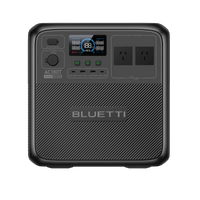












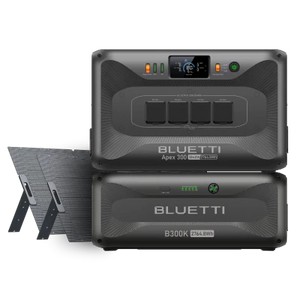











































![[Phased Out] BLUETTI B80P Expansion Battery | 806Wh](http://www.bluettipower.com.au/cdn/shop/files/202310025B80P_2000-2000px_4_4caa0c1c-4dab-4272-9e9b-2b7507e5bd81.jpg?v=1713777870&width=200)
![[Phased Out] BLUETTI B210P Expansion Battery | 2,150Wh](http://www.bluettipower.com.au/cdn/shop/files/2_08cf9ef3-03a4-4489-b641-d3edb8094896.webp?v=1716016566&width=200)
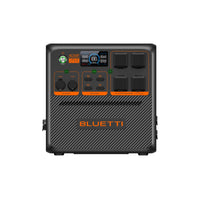


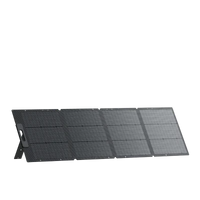


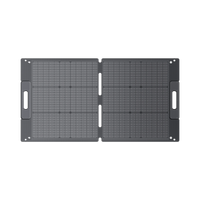











































































































![[Phased Out] BLUETTI B80P Expansion Battery | 806Wh](http://www.bluettipower.com.au/cdn/shop/files/202310025B80P_2000-2000px_4_4caa0c1c-4dab-4272-9e9b-2b7507e5bd81.jpg?v=1713777870&width=120)
![[Phased Out] BLUETTI B210P Expansion Battery | 2,150Wh](http://www.bluettipower.com.au/cdn/shop/files/2_08cf9ef3-03a4-4489-b641-d3edb8094896.webp?v=1716016566&width=120)


















